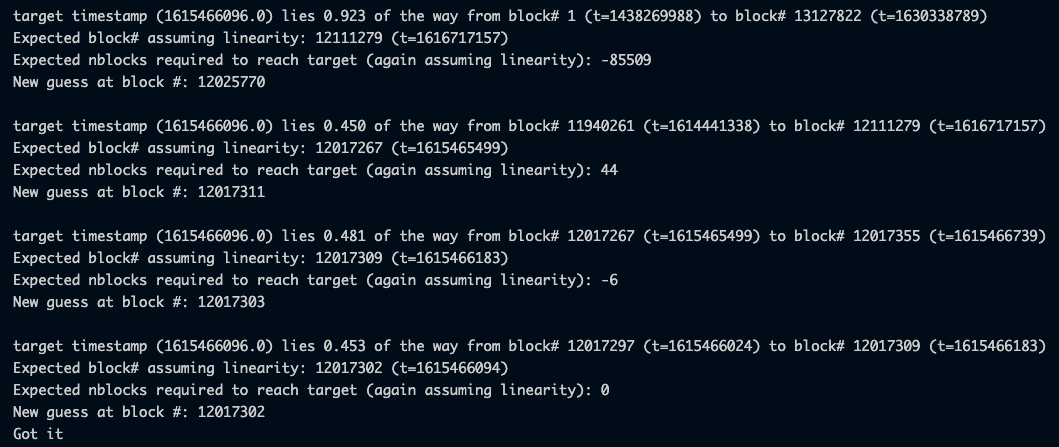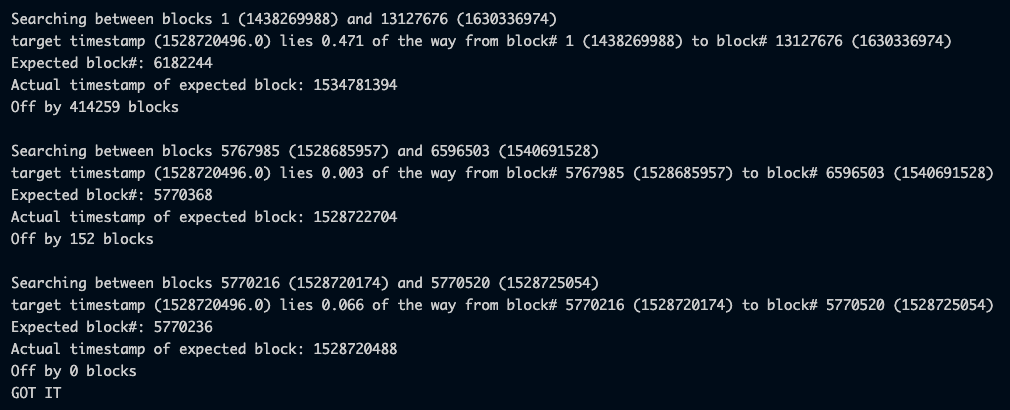It's actually possible to use the fact that block-times are locally roughly linearly separated to optimize well beyond a binary search.
This code typically requires 5 or fewer fetches to find the nearest block to a given unix timestamp, and benchmarks ~10x faster than a binary search:
import arrow
T = lambda i_block: web3.eth.getBlock(i_block).timestamp
ilatest = web3.eth.get_block('latest')['number']
def iblock_near(tunix_s, ipre=1, ipost=ilatest):
ipre = max(1, ipre)
ipost = min(ilatest, ipost)
if ipre == ipost:
print('Got it')
return ipre
t0, t1 = T(ipre), T(ipost)
av_block_time = (t1 - t0) / (ipost-ipre)
# if block-times were evenly-spaced, get expected block number
k = (tunix_s - t0) / (t1-t0)
iexpected = int( ipre + k * (ipost - ipre))
# get the ACTUAL time for that block
texpected = T(iexpected)
# use the discrepancy to improve our guess
est_nblocks_from_expected_to_target = int((tunix_s - texpected) / av_block_time)
iexpected_adj = iexpected + est_nblocks_from_expected_to_target
print()
print(f'target timestamp ({tunix_s}) lies {k:.3f} of the way from block# {ipre} (t={t0}) to block# {ipost} (t={t1})')
print(f'Expected block# assuming linearity: {iexpected} (t={texpected})')
print('Expected nblocks required to reach target (again assuming linearity):', est_nblocks_from_expected_to_target)
print('New guess at block #:', iexpected_adj)
r = abs(est_nblocks_from_expected_to_target)
return iblock_near(tunix_s, iexpected_adj - r, iexpected_adj + r)
Test:
import arrow
tunix_s = arrow.get('2021-03-11T12:34:56').timestamp()
block = iblock_near(tunix_s)
Output:


